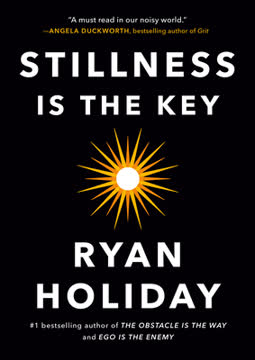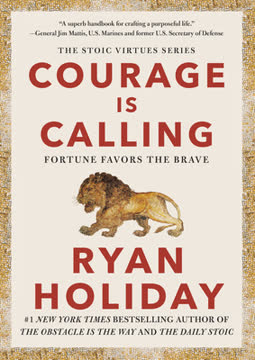Key Takeaways
1. Build a Community Before You Launch
"The shortcut to crowdfunding success is that there is no shortcut."
Prepare early. Start building relationships and a fan base 6-12 months before launching your campaign. This involves:
- Writing a blog to connect with people online and develop a readership
- Backing other projects to learn firsthand how campaigns work
- Actively participating in online forums related to your product category
- Connecting with bloggers, podcasters, and other content creators
Create valuable content. Focus on providing interesting and useful information to others, rather than promoting yourself. This approach will help you:
- Attract a loyal following who share your passion
- Establish yourself as an authority in your field
- Generate buzz and anticipation for your upcoming project
2. Make It About Your Backers, Not Yourself
"People don't buy what you do, they buy why you do it."
Shift your focus. Instead of concentrating on your own dreams and desires, make your project about creating value for your backers. This mindset change will:
- Increase your chances of success
- Help you build a loyal community
- Lead to better long-term results
Demonstrate value. Show potential backers how your product will make their lives better or solve a problem they face. This can be done through:
- Clear, compelling project descriptions
- Engaging videos that showcase your passion and the product's benefits
- Testimonials or case studies from early users or prototypes
3. Treat Backers as Individuals, Not Numbers
"As creators, we have the opportunity to look out into the crowd and see individual people, not a ubiquitous mass."
Personalize your approach. Take the time to connect with backers individually, especially during the early days of your campaign. This involves:
- Sending personal thank-you messages to each backer
- Responding promptly and thoughtfully to comments and questions
- Recognizing and valuing each backer's contribution, regardless of pledge amount
Foster a sense of community. Encourage interaction among backers and create opportunities for them to feel invested in the project's success. Consider:
- Hosting Q&A sessions or live streams
- Creating backer-only forums or discussion groups
- Involving backers in decision-making processes through polls or surveys
4. Set Realistic Goals and Deliver on Promises
"Creators who eat first finish last."
Be transparent and honest. Set achievable funding goals and delivery timelines, and be upfront about potential challenges. This builds trust with backers and helps manage expectations.
Prioritize backer fulfillment. Use the funds raised primarily to deliver on your promises to backers, rather than for personal expenses or unrelated business costs. This approach:
- Builds credibility and trust
- Increases the likelihood of future success
- Demonstrates your commitment to your backers and your project
5. Create Compelling Rewards Without Exclusivity
"While exclusives might help a single campaign and create a fun experience for the backers, if you're trying to build a company and a lasting brand from that campaign, they end up doing more harm than good."
Offer value without exclusivity. Instead of creating "fear of missing out" through exclusive rewards, focus on providing high-quality, desirable rewards that are accessible to all. Consider:
- Early access or special pricing for backers
- Limited editions that will be available later at a higher price
- Add-ons or enhancements that improve the core product
Balance scarcity and inclusivity. Use limited reward tiers strategically to create urgency without alienating potential customers. This can be achieved through:
- Time-limited offers rather than quantity-limited ones
- Gradually introducing new reward tiers throughout the campaign
- Offering unique experiences or personalization options
6. Master the Art of Project Updates and Communication
"Good communication will make backers care a lot less that your project is late."
Maintain regular, meaningful updates. Keep backers informed and engaged throughout the campaign and production process. Effective updates should:
- Be relevant, insightful, and important
- Maintain the excitement backers felt when first discovering the project
- Balance transparency with confidence in your ability to deliver
Handle challenges gracefully. When facing delays or setbacks, communicate openly and focus on solutions. This approach:
- Builds trust and understanding with backers
- Demonstrates your commitment to the project
- Can turn potentially negative situations into opportunities for community building
7. Optimize Your Project Page for Maximum Impact
"Every aspect of your project should be created with the intent of attracting and engaging backers and giving them something awesome for a fair price."
Create a compelling narrative. Your project page should tell a story that captivates potential backers and clearly communicates your product's value. Key elements include:
- A concise, engaging project video (2 minutes or less)
- High-quality images and graphics
- Clear, well-organized text with bullet points and short paragraphs
Refine your rewards. Offer 5-7 well-crafted reward tiers that provide clear value to backers. Consider:
- A $1 "follow along" tier
- A core product tier at a fair price
- A premium option with added value
- Limited high-level rewards for super fans
8. Navigate the Mid-Campaign Slump with Engagement Strategies
"Your existing backers are your most powerful asset."
Focus on your current backers. Instead of constantly seeking new backers, engage and excite your existing supporters. This can lead to:
- Increased sharing and word-of-mouth promotion
- Higher pledge amounts through upgrades
- A more vibrant and attractive campaign for newcomers
Create momentum through micro-goals. Set and celebrate small, achievable targets throughout the campaign. This might include:
- Reaching specific backer or funding milestones
- Unlocking stretch goals or new reward tiers
- Encouraging social media sharing or engagement
9. Plan for Success Beyond the Campaign
"Crowdfunding is just the beginning."
Prepare for production and fulfillment. Research and plan for manufacturing, shipping, and distribution well before your campaign ends. This includes:
- Obtaining accurate quotes from suppliers and fulfillment centers
- Understanding customs and international shipping requirements
- Building in buffer time and budget for unexpected challenges
Think long-term. View your crowdfunding campaign as the launch pad for a sustainable business. Consider:
- How to transition from crowdfunding to traditional sales channels
- Building ongoing relationships with backers and customers
- Developing a product roadmap for future offerings
10. Learn from Mistakes and Continuously Improve
"I made these mistakes so you don't have to."
Embrace a growth mindset. View setbacks and challenges as opportunities to learn and improve. This involves:
- Analyzing what went wrong and why
- Seeking feedback from backers, partners, and mentors
- Implementing changes in future campaigns or business practices
Share your experiences. By openly discussing your successes and failures, you can:
- Help other creators avoid similar pitfalls
- Build credibility and trust within the crowdfunding community
- Attract supporters who appreciate your honesty and commitment to improvement
Last updated:
Review Summary
A Crowdfunder's Strategy Guide receives high praise from readers, with an average rating of 4.23 out of 5. Reviewers appreciate Jamey Stegmaier's expertise in crowdfunding, particularly for board games. The book is lauded for its practical advice, comprehensive coverage of crowdfunding topics, and emphasis on community building. Readers find it invaluable for planning Kickstarter campaigns, noting its clear writing style and helpful checklists. While some consider it dense, most agree it's essential reading for anyone considering crowdfunding, offering insights that can save time and increase chances of success.
Similar Books









Download PDF
Download EPUB
.epub digital book format is ideal for reading ebooks on phones, tablets, and e-readers.




